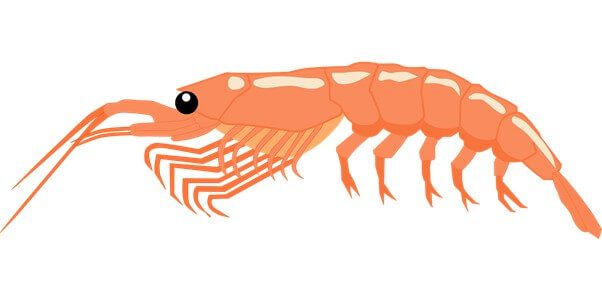Reading Time: 3 minutes
Monica tells us about the Atlantic Northern Shrimp, an endangered species. A report for Different Truths.
The Atlantic Northern Shrimp, scientifically known as Pandalus Borealis, is also known by other names such as pink shrimp, salad shrimp, deep water prawn, and cold-water shrimp.
About the Species
● Commercial fishing for northern shrimp species is strictly prohibited.
● The population level is significantly below the target population level. Though, fishing is prohibited in the United States.
● According to the survey conducted by the Atlantic States Marine Fisheries Commission, the Northern Shrimp has collapsed, and the stock size has remained at exceptional lows for many years.
● The joint state-federal summer shrimp survey primarily monitors the abundance of northern shrimp.
● The Atlantic States Marine Fisheries Commission’s Northern Shrimp technical committee provides annual stock assessment and information to fishery managers.
● The enrolment of Northern Shrimps is dependent on various factors such as ocean temperatures and spawning biomass.
● Maine’s ocean temperature in the western gulf has increased in recent years and is predicted to rise.
● Another reason for the decline of these species is the increase in their predators, such as dogfish, redfish, silver hake, and spiny.
● The regulations are in place to decrease non-shrimp bycatch and decline small male shrimp catch with lower market value.
The Appearance of the Northern Shrimp
The Northern Shrimp comes in pink colour. These fishes are bisexual. They come out as a male, but their testicles turn into ovaries, and they complete their lives as females for one or two years.
… the females are relatively larger and can go about 165 mm of body length.
However, the males usually reach an average of 120 mm at maturity. Simultaneously, the females are relatively larger and can go about 165 mm of body length. However, the shrimp’s size at different ages can vary because of the changes in the temperature in the shrimp’s water and gender. The higher temperature of the water can result in faster growth[i].
The reproduction season of Northern Shrimp begins in the late summer and usually offshore. With the early fall, the females start to eject their eggs onto their abdomen. And at this time, they will move inshore where the eggs will hatch in the winters.

Habitat of Northern Shrimp
The species are found in the colder regions of the Northern Atlantic and Northern Pacific Ocean. These shrimps can be found on a soft, muddy bottom at a depth of 66 to 4,364 feet in the water, where the temperature can be between 32-to-46-degree F. The species thrives in the water where salinity varies between 32 and 35 ppt, depending on where the shrimp are at life cycle.
The distribution of the subspecies of cold-water shrimps ranges from New England in the United States, Southern and Eastern Greenland, Iceland, Norway, Canada’s eastern seaboard, and more.
Commercial Fishing
The Northern Shrimp is an essential food source, so it has been fished widely since the early 1900s in Norway. In Canada, these shrimps are sold peeled, cooked, and frozen in supermarkets and consumed as appetizers.
Use of Pink Shrimp
The species have a short lifespan, which results in a variable stock every year. Though, the species are considered overfished. Other human consumption, the northern shrimp is used as an enzyme used in molecular biology known as shrimp alkaline phosphatase (SAP). However, the species’ carapace is used as a source of chitosan, which is a different chemical used for treating bleeding wounds, filtering wine, and improving the soil in organic farming[ii].
Threats
The primary threat to the Northern Shrimp species population is oceanic regime shifts caused by climate cycles and overfishing.
Because of the temperature tolerance, the Northern Shrimps can be sensitive to an increase in the ocean temperature.
The regime shifts are changes in the climate ecosystem, which is generally the result of periodic changes in the climatic conditions. Because of the temperature tolerance, the Northern Shrimps can be sensitive to an increase in the ocean temperature.
Ocean acidification is another dangerous threat to pink shrimps as the ocean absorbs carbon-di-oxide. And as the carbon-di-oxide levels up in the atmosphere, most of it is dissolved in the sea. This makes the ocean more acidic and hence becomes a hazard to ocean creatures[iii].
Overfishing can happen when the fishery removals increase in the production by the remaining stock.
Overfishing can happen when the fishery removals increase in the production by the remaining stock. Though, the Northern Shrimps are now taken mostly with bycatch in fewer amounts, which is unlikely to result in overfishing.
Among various aquatic species, the population of northern shrimp is declining. Though many other fishes like angler fish are also at a significant threat, you might not be aware of, and you would wonder, is the angler fish endangered[iv]?
[i] Source: https://pixabay.com/vectors/shrimp-aquatic-orange-sea-5431122/
[ii] Source: https://media.giphy.com/media/xTiN0m2yfH8NzEnl4c/giphy.gif
[iii] Source: https://media.giphy.com/media/3o6ozmlzlH8YQdr9GU/giphy.gif
[iv] https://animalcreativefacts.com/where-do-angler-fish-live/
Visual by the author and Different Truths

















